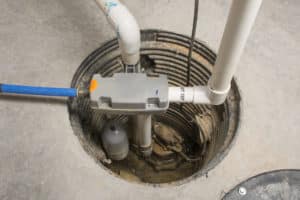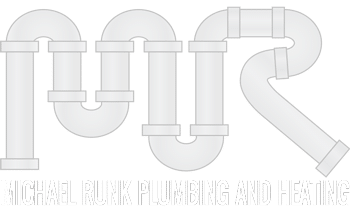Flooded basements would be all too common if it weren’t for a device called a “sump pump”. Your home’s sump pump is constantly working to protect your home from flooding. Most of the time, homeowners don’t even know they have one until a storm makes them work overtime. Here’s what you need to know about sump pumps.

What is a Sump Pump?
A sump pump is a cylindrical device placed in the lowest point of your basement, inside a carved-out pit called a basin. It has valves that sense increasing water levels or pressure. When the water gets too high, the sump pump automatically pumps excess water out of the basement and away from your property using a discharge line. This process prevents groundwater from rising to the level of your basement floor and prevents flooding.
Benefits of a Sump Pump
Investing in a quality sump pump comes with plenty of advantages, including:
- Defend your basement against flooding
- Safeguard basement appliances
- Reduce mold, mildew, and fungus growth
- Keep foundation intact
- Improve indoor air quality
- Give you peace of mind
Types of Sump Pumps
There are four common types of sump pumps: submersible, pedestal, battery-powered backup, and water-powered backup.
Submersible
Submersible sump pumps contain the pump and the motor in one unit. Because this type of sump is completely submerged in the water basin, they are quieter, more powerful, and takes up less space than other types of pumps. However, they may not last as long as other pumps since they are fully submerged in water.
Pedestal
Pedestal sump pumps consist of a separate motor and pump. The motor sits on a pedestal above the basin with a hose running from the basin to the pump. When there is excess water, the pump sends water through the hose and out to a designated drain area. Because the motor of a pedestal pump is not submerged, it’s usually louder than a submersible sump pump, but it often has a higher lifespan.
Battery-Powered Backup
With most sump pumps, if the power goes out in your home, they are unable to operate. But battery-powered backup sump pumps continue to work even after a power outage. If the power goes out in your home, your battery-powered backup sump pump’s float switch will turn on and start removing water.
Water-Powered Backup
A water-powered backup sump pump also works if there is a sudden loss of power. It works by monitoring the water pressure inside the basin. If the sump pump indicates an increase in water pressure, it will begin to remove the excess water out of the basin and outside the property. The best part about this type of pump is that they don’t require you to monitor or replace its batteries.
Need to Replace Your Sump Pump?
If you need to repair or replace your sump pump, let the plumbing experts at Michael Runk Plumbing and Heating do it for you. As a master plumber in MD, we’re able to diagnose and repair a wide range of sump pump problems. Contact us today to schedule an appointment.
